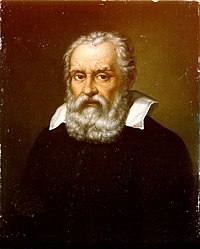Domenico Passignano (1559 – 17 May 1638), born Domenico Cresti or Crespi, was an Italian painter of a late-Renaissance or Counter-Maniera (Counter-Mannerism) style that emerged in Florence towards the end of the 16th century.
Domenico Passignano | |
|---|---|
 Deposition from the Cross | |
| Born | Domenico Crespi or Cresti 1559 |
| Died | 17 May 1638 |
| Nationality | Italian |
| Known for | Painting |
| Movement | late-Renaissance, Counter-Mannerism |

Biography
editCresti was born in Passignano, currently a frazione of Barberino Tavarnelle about 30 km south of Florence, and was educated by the local Vallombrosan monks. He started his works in the stylized Tuscan manner, working with Giovanni Battista Naldini and Girolamo Macchietti. After travelling from Rome to Venice (1581–1589), he came under the influence of Tintoretto's style. He had travelled to Venice as an assistant to Federico Zuccari, who had employed him previously in the completion of Giorgio Vasari's The Last Judgment on the ceiling of the dome of Florence Cathedral.[1]
He was known to paint with great speed; however, as he used less paint in order to work quickly, most of his works have been severely damaged by time. As a result of this gift, he was nicknamed Passa Ognuno ("[He] Passes Everyone") – a possible play upon the name of his birthplace.
In Florence, he painted frescoes of the Translation and Funeral of Saint Antoninus (1589) for the Cappella Salviati in San Marco and Preaching of John the Baptist (1590) for San Michele Visdomini. He painted a Nativity (1594) for Lucca's Duomo di San Martino. Other works by Passignano can be found in the church of Sant'Andrea della Valle (Barberini Chapel), the Basilica of Santa Maria Maggiore (Baptistery ceilings) and Santa Maria in Vallicella (altarpiece of the Chapel of the Annunciation) in Rome, San Frediano in Pisa, in the Uffizi Gallery, and his Our Lady of the Jacobins (1630) in the Besançon Cathedral. In addition, he painted famous portraits of Galileo and Michelangelo. He also painted frescoes for the Vallumbrosan Badia di Passignano in his hometown.
Among his pupils were the brothers Valore and Domenico Casini,[2] Pietro Sorri,[3] Cesare Dandini, and Pietro Ricchi.
Passignano died at Florence in 1638.
Selected works
edit- Ganymede and Jupiter, University Oklahoma Museum of Art [1]
- The Allegory of Chastity, [2]
- Wedding Banquet of Grand Duke Ferdinand I de Medici, [3]
- Bathers at San Niccolò, 1600
-
Bathers at San Niccolò, 1600
-
Sketch of Charity flanked by Glory and Happiness, circa 1608
Sources
edit- Freedberg, Sydney J. (1993). Pelican History of Art (ed.). Painting in Italy, 1500–1600. Penguin Books Ltd. pp. 625–626.
- Herbermann, Charles, ed. (1913). . Catholic Encyclopedia. New York: Robert Appleton Company.
- ^ Berti, Federico (2013), Domenico Cresti, il Passignano,"fra la natione fiorentina e veneziana": Viatico per il periodo giovanile con una inedita Sacra Famiglia, Florence: De Stijl Art Publishing, p. 18, ISBN 978-88-904451-3-2
- ^ Biografia universale antica e moderna ossia Storia per alfabeto della vita; page 227.
- ^ Dizionario ragionato delle voci delle arte del disegno architettura, pittura, scultura ed industrie affini, (1888), by Giuseppe A. Boidi, page 367.
External links
edit- Orazio and Artemisia Gentileschi, a fully digitized exhibition catalog from The Metropolitan Museum of Art Libraries, which contains material on Domenico Passignano (see index)